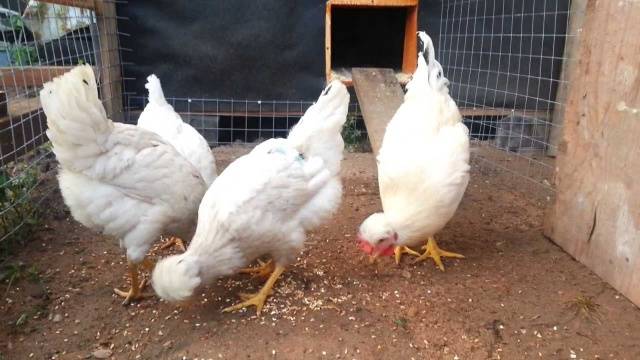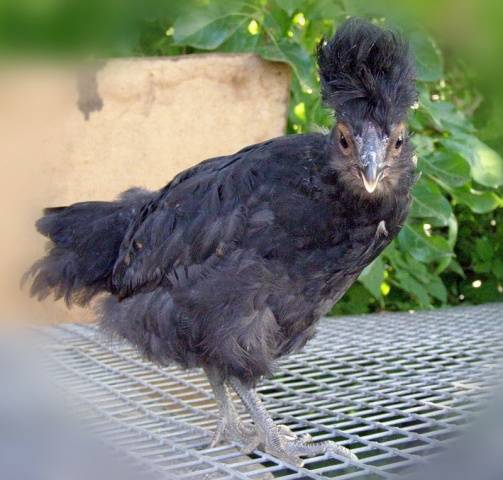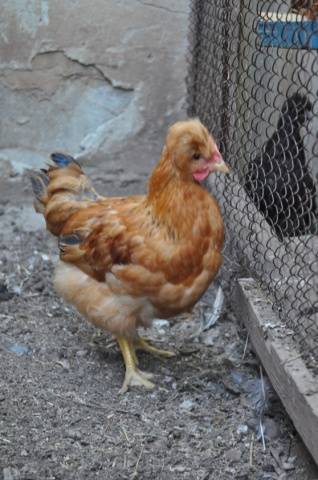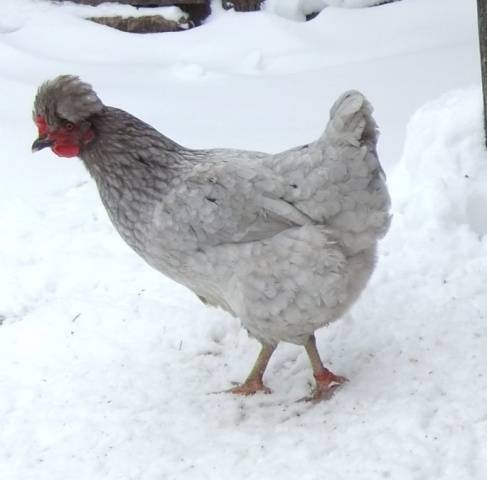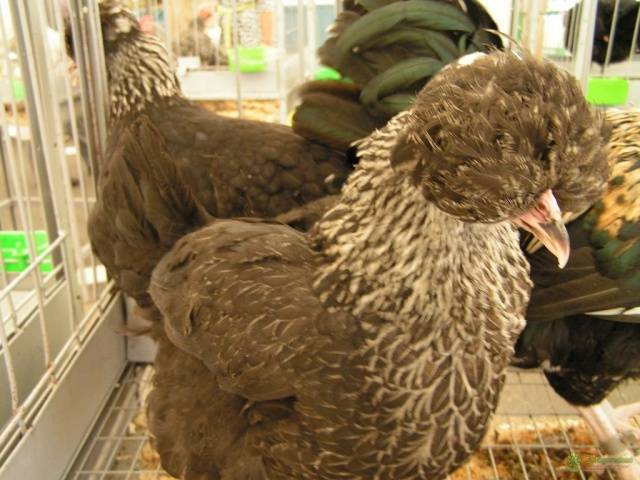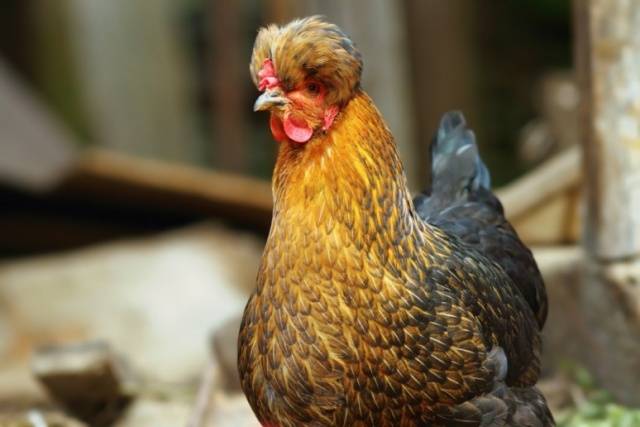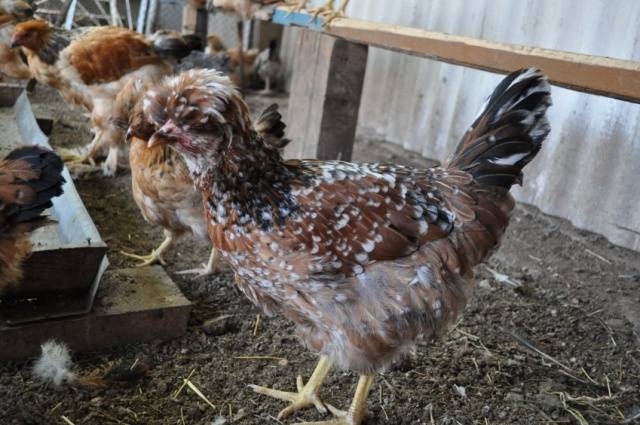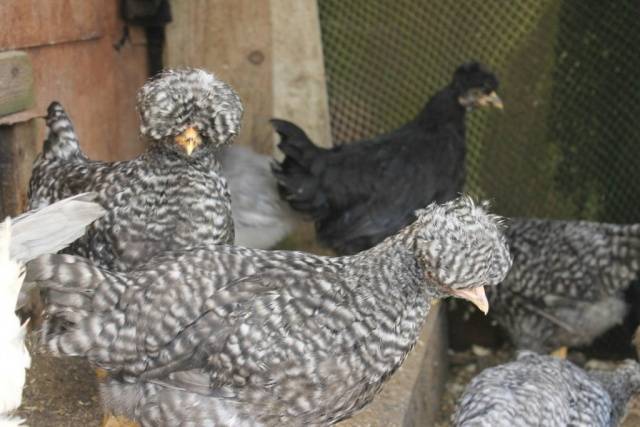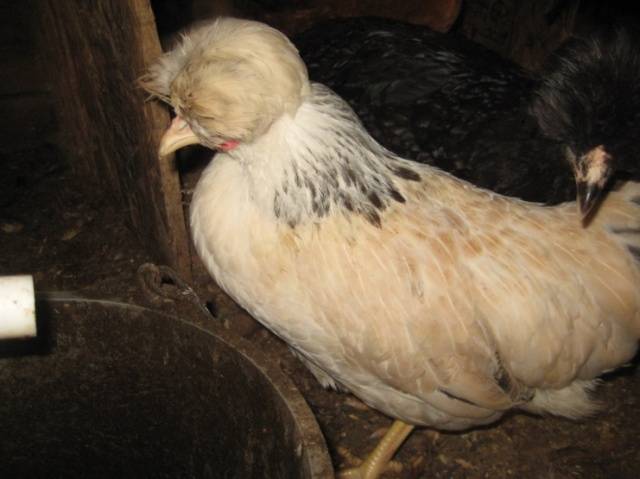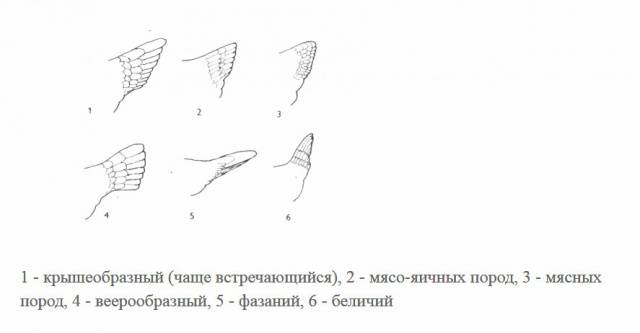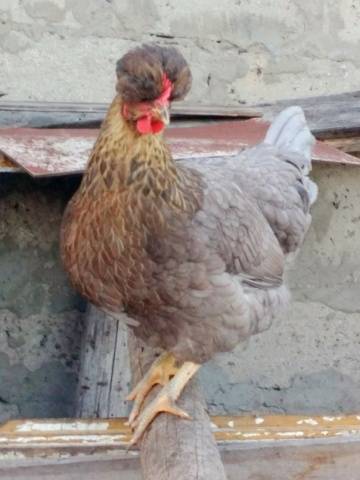Content
The original looking old Russian breed of chickens, bred by the method of folk selection, was very common in the Russian Empire in the 19th century. The exact time of its origin is not known, but it is believed that the ancestors of these funny birds were Asian chickens. The opinion is supported by the fact that the Russian Crested breed of chickens is suspiciously similar to another old and original looking, but Ukrainian breed. By and large, they have the same names. Replaced only the region of origin and "crest" by "chub".
For the sake of interest, you can compare a photo of a Russian crested chicken breed (left) and a Ukrainian forelock (right).
And try to find 10 differences.
This situation is not surprising. Most likely, the division into different breeds took place not according to productive and exterior characteristics, but along administrative boundaries and more recently in a historical perspective. With the widespread prevalence of the Russian crested breed in tsarist Russia, it is unlikely that the peasants who moved to Little Russia in families would basically leave their chickens in their old place.
After the revolution in the Soviet Union, there was a directive that each republic should have “its own” republican breed of farm animals. Moreover, in all spheres of agriculture: from birds to cattle. Apparently, it was then that the Russian crested came under the division along the administrative border.
What is she like these days
Today, the crested chicken is considered a primordially Russian breed. When breeding the breed, it is unlikely that the peasants "set a goal" to make chickens resistant to Russian frosts. It's just that "folk selection" by today's urban standards is very cruel towards animals. If the animal does not meet the necessary requirements, is not able to withstand the conditions of detention offered to him, he is sent under the knife. If they succeed, and it will not fall earlier. But, to be honest, such a tough selection gives excellent results.
In the description of the Russian crested breed of chickens, its high frost resistance is especially noted. Here it is just right to recall the catch phrase from the film: “You want to live, you’ll not be so upset.” In the situation with crested chickens, this statement is more than appropriate. If the peasant does not have an insulated chicken coop, then either adapt to survival in a cold barn, or freeze. And then there were no electric heaters.
Modern standard
The Russian Corydalis is a medium-sized bird of a universal direction.
The head is elongated and proportional. The face is red. The crest is red, often leaf-shaped, but a pink-shaped, regular shape without extra processes is also allowed. The face, lobes and earrings are red. There may be white blotches on the lobes. The eyes are orange, red, or light yellow.
Birds with dark plumage may have brown eyes. The crested beak is strong, the color of the beak depends on the color and can vary from yellow to dark gray.
Crested chickens in Russian crested chickens are better developed than in roosters due to the poorer development of the crest. The feathers on the crest are directed backwards. The tuft shape can be:
- helmet-shaped;
- spreading;
- sticking out;
- sheaf-like.
The neck is relatively short. The Russian crested rooster has a poorly developed mane, and the crest is smaller than that of a chicken. In the photo below, the chicken has a helmet-shaped crest
The back and loin of Russian crested chickens, as seen in the photo, are wide, even. The tail of the rooster is lush, long. Moreover, not only long braids, but also a cover feather.In the chicken, the tail is somewhat less developed, although it also differs in rich plumage.
In particular, it is indicated that the tail of the Russian crested is poorly developed. In roosters, tail feathers are bared, since the cover feather and plaits are not long enough.
The wings are large, slightly lowered. The chest is broad and well filled. The belly is well developed in chickens and tucked up in roosters. Legs of medium length with non-feathered metatarsus.
The plumage is well developed, rich, but not loose. According to the description of the standard, the color of the Russian crested has at least 10 variants:
- white;
- the black;
- red;
- lavender;
- grey;
- black and silver;
- black and gold;
- chintz;
- cuckoo;
- salmon.
The most common color in the Russian Crested breed is white.
Varieties of colors
What are the types of color in the Russian crested breed of chickens is shown in the photo below.
White.
With pure white feathers, chickens should have a yellow beak and hock.
The black.
With a black color, chickens have brown eyes, a dark gray beak and gray hocks.
Red.
It would be a boring red hen, if not for the crest.
Lavender.
Chickens often mutate genes responsible for color. This leads to the appearance of "blue" or "lavender" colors. Variations in lavender color range from almost gray to truly blue-like.
Grey.
With a general dark gray color, the neck is framed by feathers with a white border. The beak and metatarsus are gray, the eyes are brown.
Silver black.
The crest, neck and loin are silver. The back, belly, wings and sides are black. The eyes are brown.
Golden black.
Genetically, chickens of this color are black, so the beak and metatarsus are also dark in color, and the eyes are brown. On the neck and crest, a gold-colored feather, which in roosters passes into the covering feathers of the loin.
Calico.
The most interesting and varied color of the Russian crested breed of chickens is chintz. On the main red or red color, feathers of a lighter color are scattered, creating an original "shirt" pattern for each chicken.
Cuckoo.
"Uniform" variegated color, beak and metatarsus are light.
Salmon.
The delicate fawn color with dark dots on the chest and neck is why it is called salmon, which is very reminiscent of the "shirt" of freshly caught salmon.
Description and photos of the vices of Russian crested chickens, unacceptable for breeding birds:
- underdeveloped crest;
- lack of a tuft;
- white lobes;
- very large crest;
- rough body;
- high set of wings;
- yellow color;
- too long metatarsus;
- "Squirrel" tail.
Productivity
Due to the genetic diversity among the crested hens, the data on productivity in the description of Russian crested chickens differ depending on the source. So, according to various sources, the rooster weighs 2.7 - 3.5 kg. Chicken from 1.8 kg, which does not fit at all with the declared universal direction, up to 2.2 kg. The last figure is closer to the meat and egg breed. Although the data on egg production differ, none of the numbers resembles the egg breed: 150 - 160 pcs. for the season. The average egg weight is 56 g. The shell can be white or creamy.
Dignity
According to the owners, the Russian crested breed of chickens fully meets the expectations assigned to it:
- excellent frost resistance (even the chickens wanted to live);
- original and unusual appearance today;
- variety and decorativeness of colors;
- stable "delivery" of 1 egg every 2 days (and no one expects more from them);
- good fertilization of eggs;
- high hatchability and safety of chickens;
- minimum content requirements;
- human orientation;
- calm character.
The last point is absent in roosters. They are pugnacious and it is pugnaciousness that they attribute to the shortcomings of the Russian Crested.
In this case, the feathers have to be trimmed, since, due to the dense plumage, the chicken cannot even see the feeder. A shorn crest will look ugly, but the health of the chicken is more expensive.
Content and diet
Like a classic "village" chicken, the crested hen does not require any special conditions. There would be a shelter from the weather, a high perch, dry bedding and a full feeder. In summer, chickens feel great in an open enclosure, in winter they prefer to hide from snow and wind in a barn.
In feeding, the crested are also not picky. In the summer they can even provide themselves with food on their own. But in the case of the impossibility of walking in freedom, corydalis need grain, calcium, animal proteins and juicy feed. Like any chicken, the Corydalis is omnivorous and will gladly eat the kitchen waste left over during the preparation of dinner.
Testimonials
Conclusion
In the breed of Russian crested chickens, there is a great genetic diversity. Work with Russian crested chickens has not been carried out for a long time and only now they are beginning to collect data on the number of Russian crested chickens kept in private farmsteads. To date, recorded only 2 thousand. Corresponding to the description of the individuals, although many keep the Corydalis in the yard. But with a high degree of probability this is either not a purebred bird, or chickens of a different breed. There are a lot of crested chicken breeds in the world. In this regard, you cannot completely trust the description and photo of the Russian crested breed of chickens on the Internet or when buying by ad. To acquire a truly purebred bird, it is better to contact the Russian Gene Pool.




